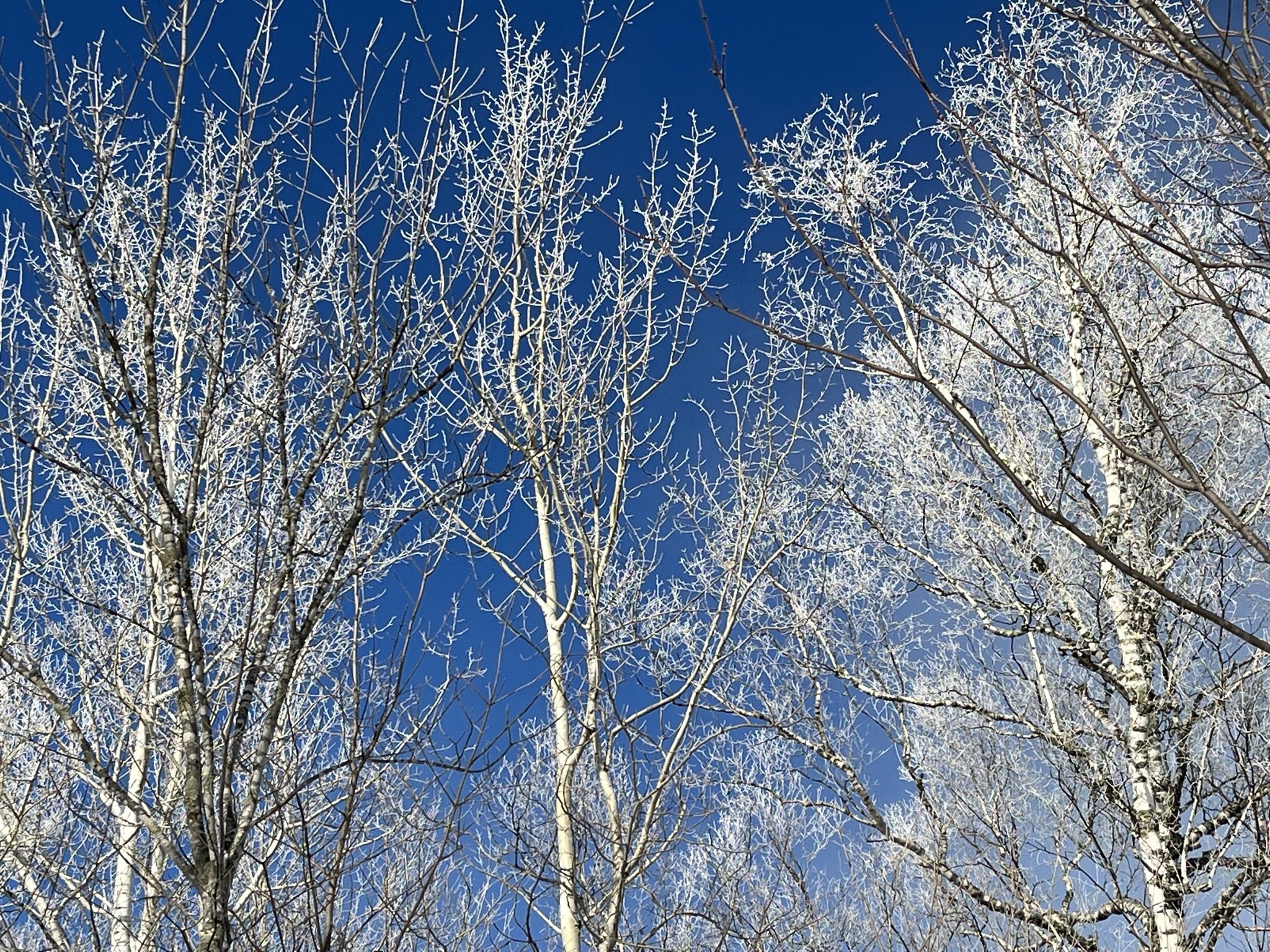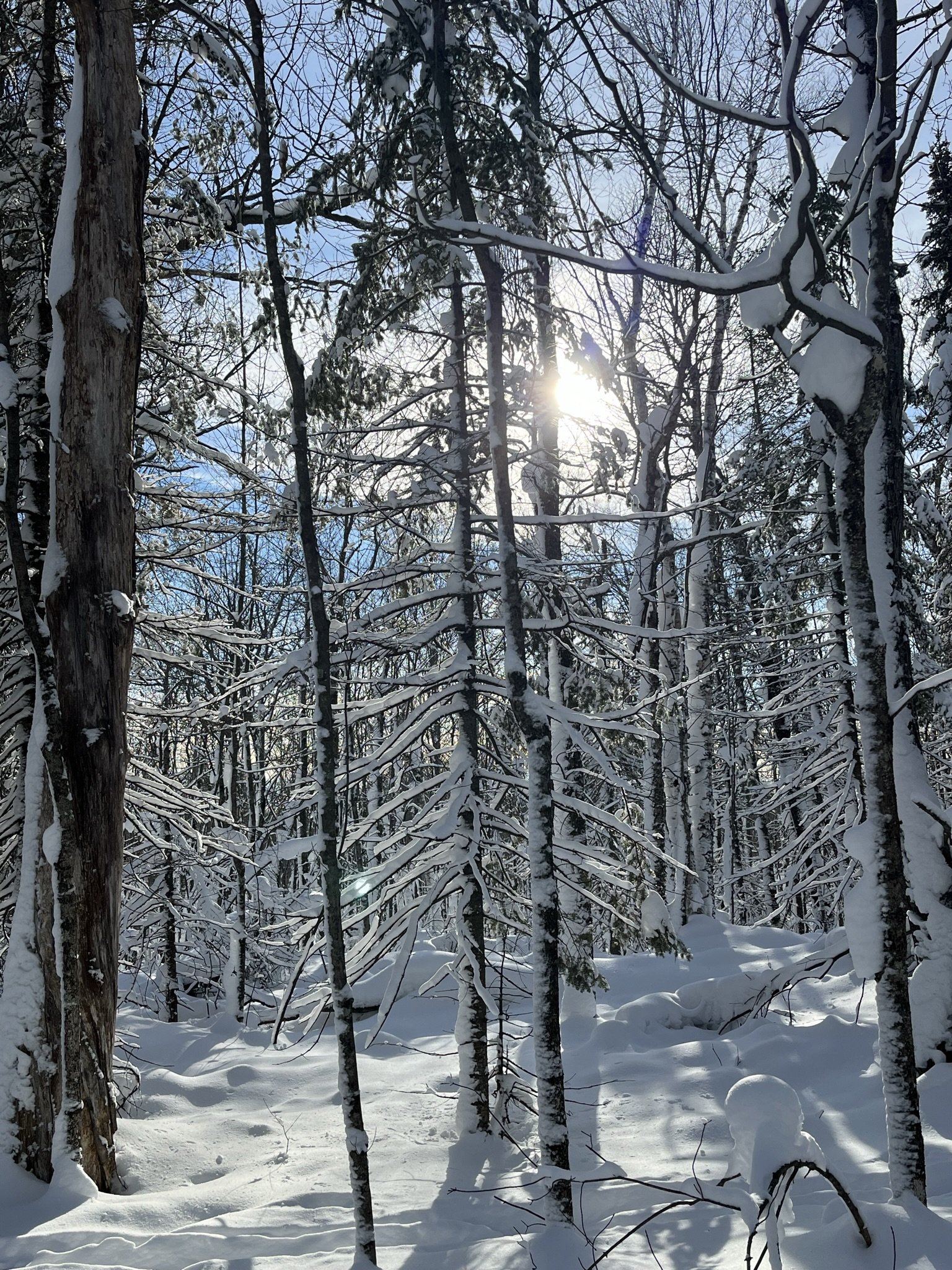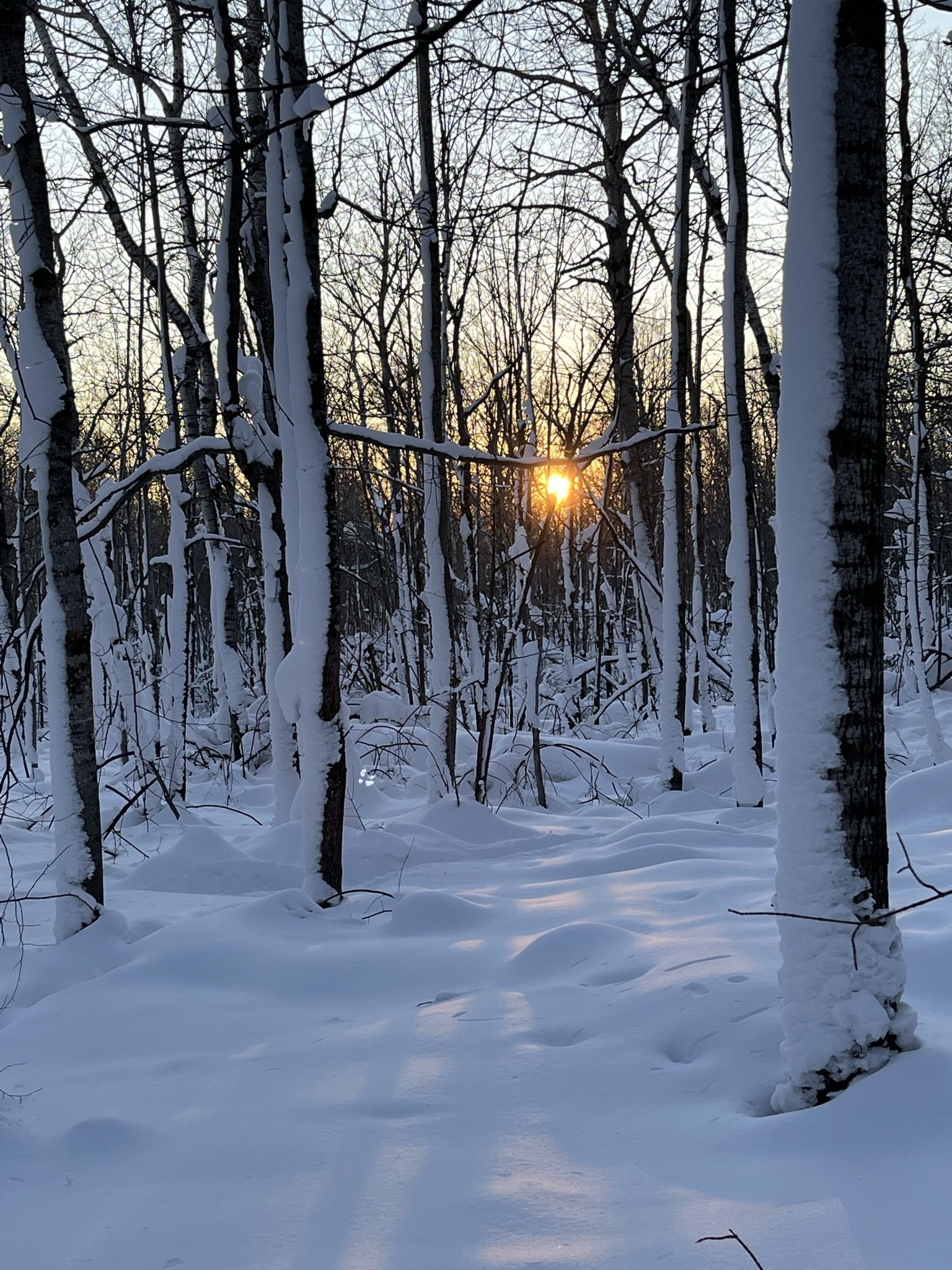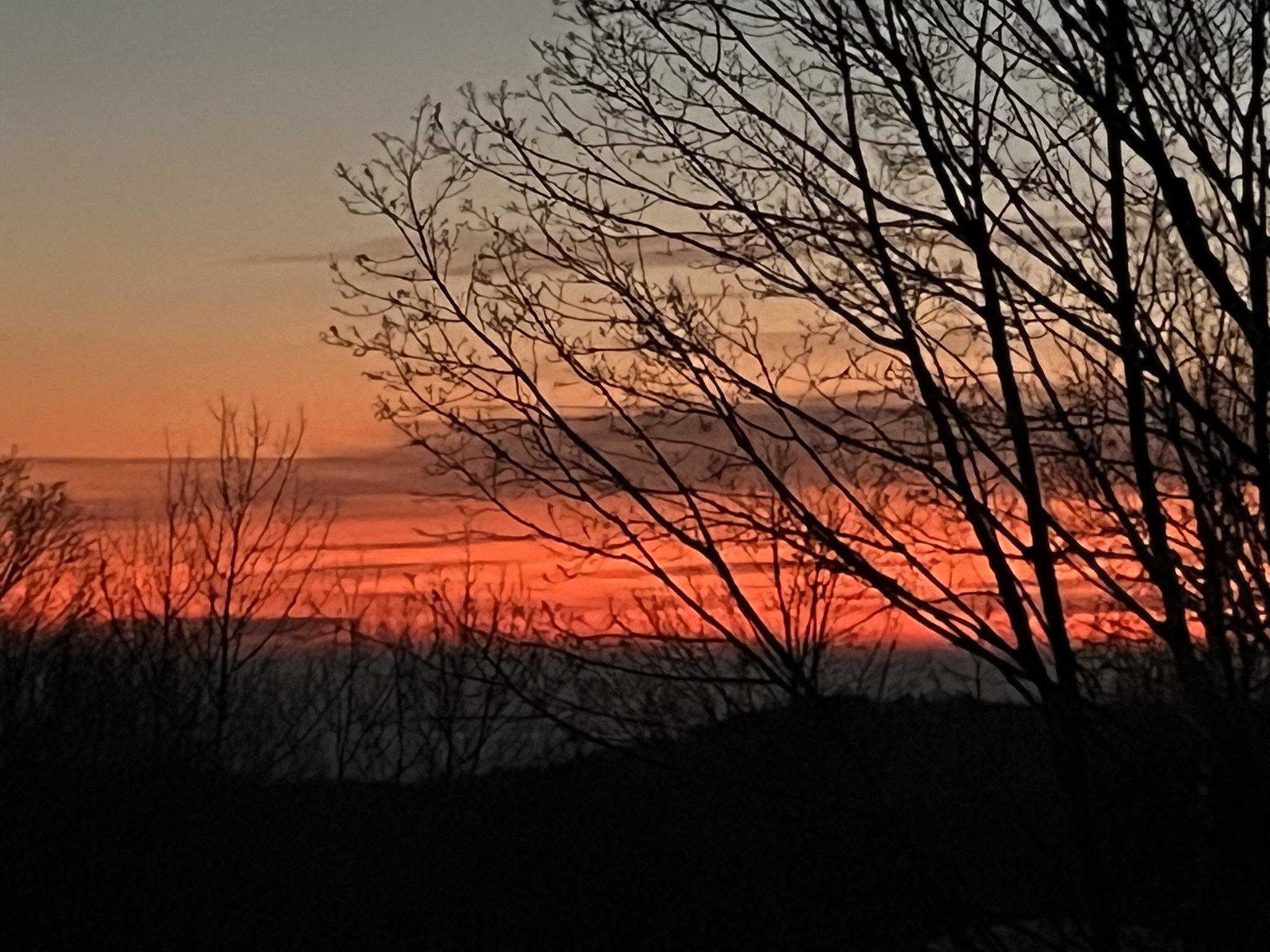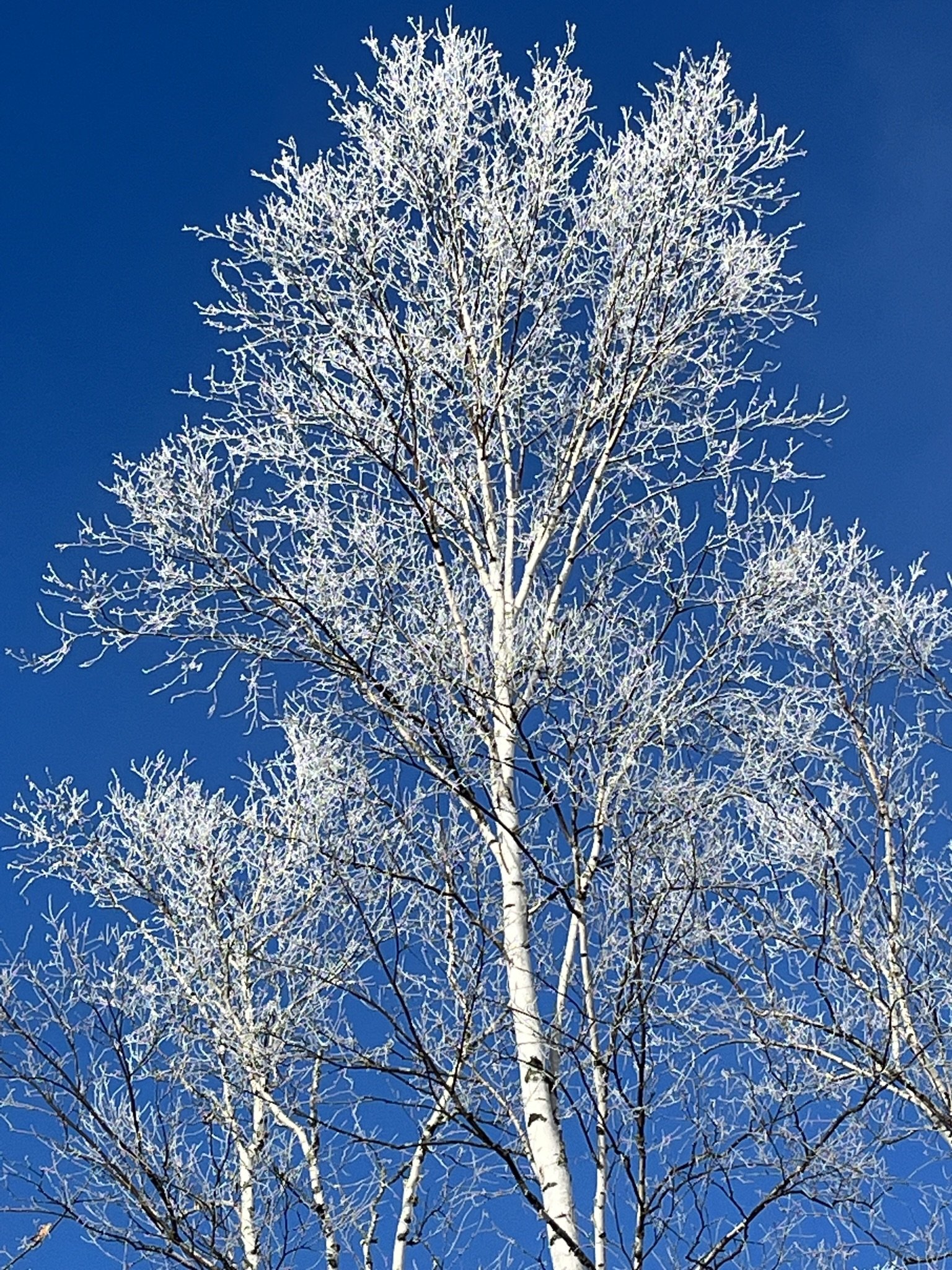I keep trying to stay focused on writing a serious, scholarly blog about seeds, but in the past few days I have found myself continuously distracted by the beauty all around me – the lush sunrises, the stunning orange moonrise -- glowing ever brighter as it rises above the lake and sparkles in its reflection below, the fresh deep snow covering every twig in the forest, the quality of the light through the trees in the early evening hour, the hoar-frost-covered branches suddenly revealing themselves as the fog lifts and the sun catches every shimmering bough, the moon rising just as the sun sets, and the moon setting just as the sun rises. These windless winter days have been exquisite and make my heart as full as the moon.
Distracted by beauty? No, it seems rather that the beauty draws me into a truer focus and depth. Distract – from the Latin dis – meaning “away” and trahere – “to draw.” Beauty, far from being dis – tracting, rather “tracts” us, draws us in, directs us to exactly what we need to follow. Strange that the verb “to tract” has become “obsolete.”[i] We distract, extract, detract, retract – but to “tract” has become old-fashioned, out-of date, passé. Our lives have become so full of distractions. Our phones ding and chime and alert us to “notifications” – to notice what the phone considers worthy of our attention. The beauty around me these days has caused me to reconsider what I need to notice, to what I need to attend.
The line from Rumi, “May the beauty we love become what we do,” keeps reverberating in my mind. What would that mean? How can I do this beauty I love? What I’ve noticed in myself is that as I am so filled by the beauty all around me, my capacity for gratitude grows, and as gratitude fills my being, it overflows into joy, into kindness, into compassion. Nor is it enough for me to experience this beauty myself. I have a deep need to share it. This is what the Scottish moral sense theorists[ii] considered to be our innate moral sense – that our joy is enhanced, that our experience of beauty and goodness is enhanced when we share it with others. This is what Thomas Jefferson, a moral sense theorist, intended when he counted among our inalienable rights, not the pursuit of property as these rights were originally framed by John Locke[iii], but rather, the pursuit of happiness. And how did moral sense theorists believe happiness is achieved? By enhancing the happiness of others. What a different nation we might be if we had not somehow slipped back into the equation of happiness with property that Jefferson deliberately chose not to include, and rather regarded as our deepest inalienable right the right to enhance the happiness of others.[iv]
My Facebook feed the past two days has been filled with photos of the extraordinary sunrises, moonrises, frosted trees, winter beauties -- everyone wanting to share beauty with the world. It moves me to tears. Ah, that we could all live wanting so to enhance each other’s lives with beauty, with joy, with attending to each other’s needs for care and community and rejoicing.
What is the beauty you want to share with the world? In the beginning of the book, Let the Beauty We Love Be What We Do,” the collected authors share the beauties they love:
The beauty I love . . . is allowing the 10,000-petal flower of my soul to open to its own time and supporting others to do the same/ is hearing the Divine in my soul and others/ lies in the breadth of grandmotherhood/ comes from creating space for others to discover joy in reading/ includes art, nature, and making connections that create beauty/ is living into my call/ is the way simple work, done well, informs the soul/ is interacting with family, friends, and clients in authentic ways/ is seeing others learn and grow/ is quiet mornings/ is laughter of children, the space in silence where the chatter of heart and head can find each other, being a friend to others and to myself. The beauty I love takes many forms, with one thread in common – that it takes me out of myself and out of time – a simple walk . . . to be on the water in a kayak . . .a phrase on a page . . . a purple finch at the feeder . . . the smell of the seasons just prior to their appearance
What is the beauty you love -- the beauty so intense, so enlivening that it begs to be shared with another – whether a loved one or a stranger, whether the thing of beauty itself or in the kind act, the compassionate heart, the friendly smile, the generous gift of time and attention, the expression of gratitude, the humble bowing down to kiss the ground it inspires in you.
I will eventually finish the blog about seeds, but for today, I am happy to be ‘tracted’ by beauty.
May the beauty we love become what we do.
There are a thousand ways to kneel and kiss the ground.
- Rumi
Sources
Barker, Ernest, ed. 1947. Social Contract: Essays by Locke, Hume, Rousseau. London: Oxford.
Hare, Sally Z. and Megan Leboutillier, eds. 2014. Let the Beauty We Love Be What We Do: Stories of Living Divide No More. Pawleys Island, South Carolina: Prose Press.
Rumi, Jalal al-Din. 2004. The Essential Rumi. New York: HarperOne.
Wills, Garry. 1978. Inventing America: Jefferson’s Declaration of Independence. New York: Doubleday.
[ii][ii] Moral sense theory grew out of the Scottish Enlightenment (18th-early 19th century), and argued, among other things, that every person, regardless of sex, race, class has an innate sense of morality, of what is right and wrong.
[iii] English philosopher John Locke (1632-1704) first asserted each person’s inalienable rights to “life, liberty, and property” in his Second Treatise on Civil Government (1690).
[iv] It is interesting, in this regard, that “tract” has come to mean a large piece of landed property.
